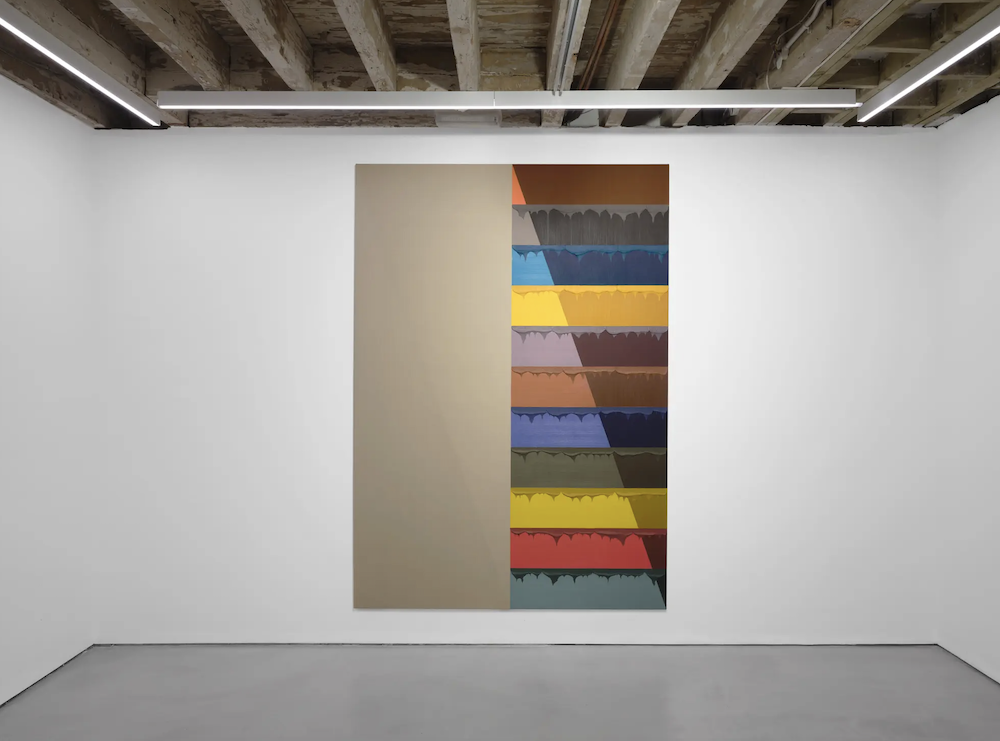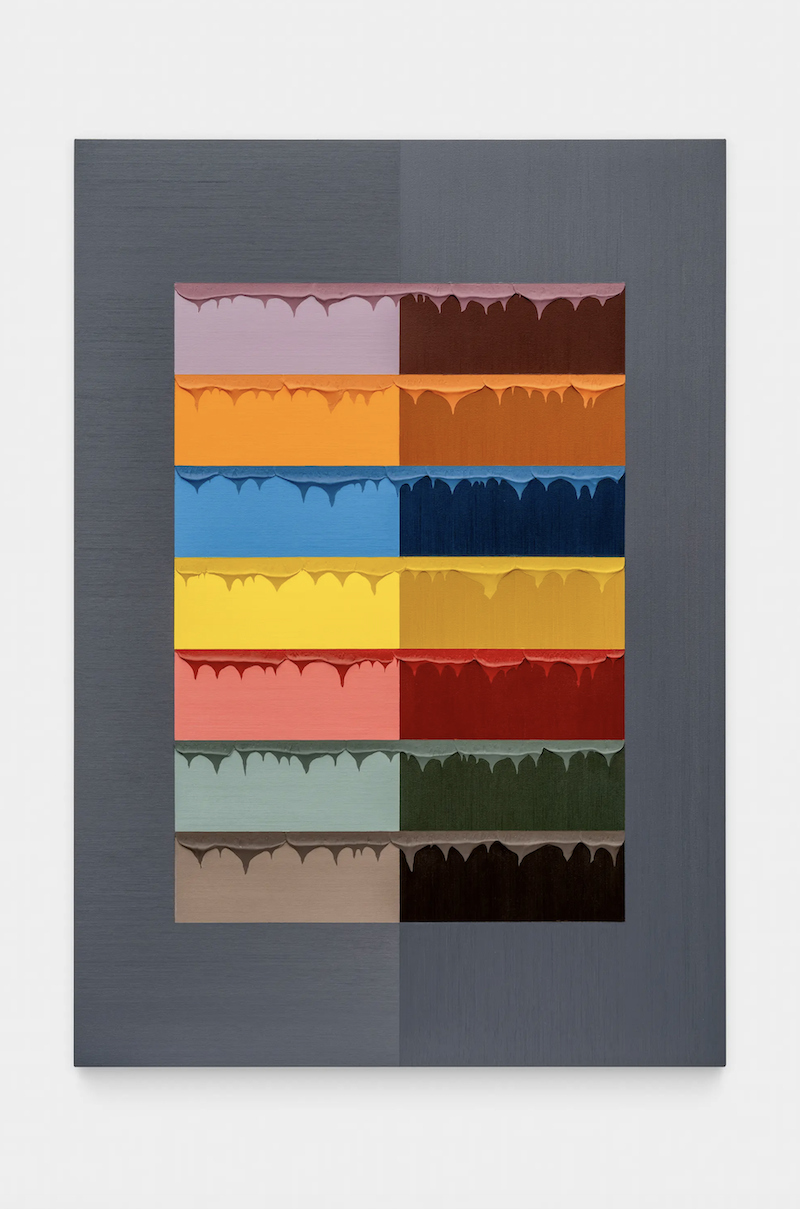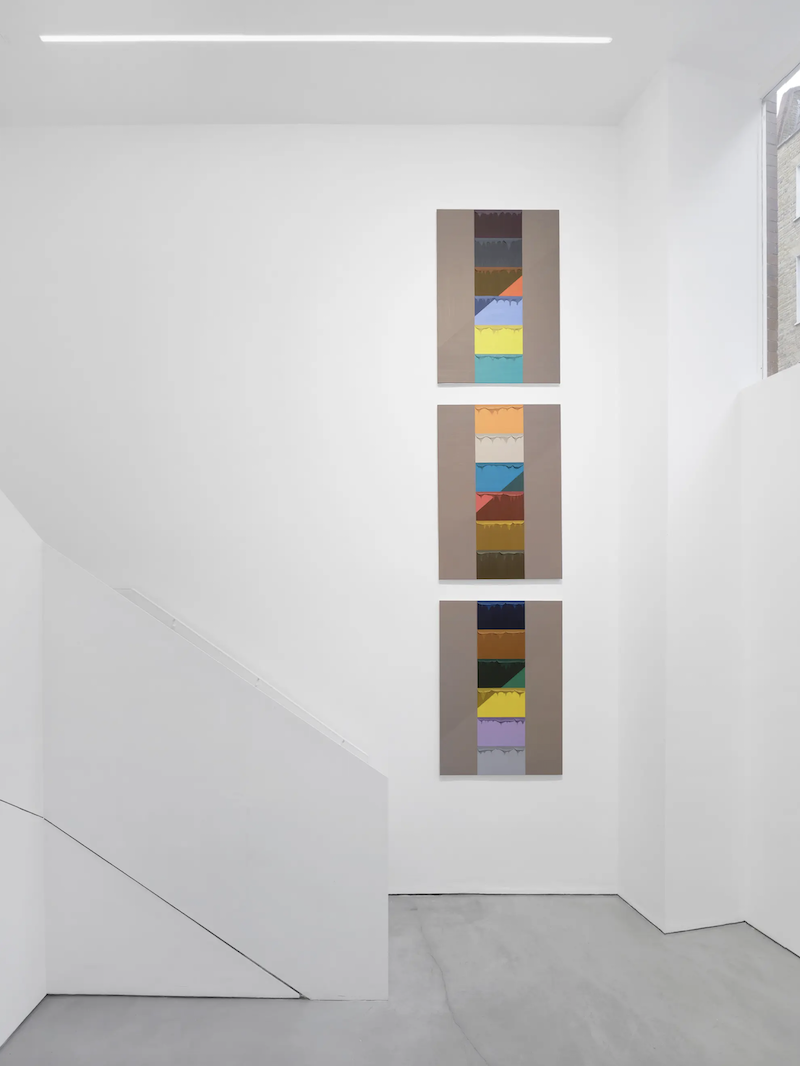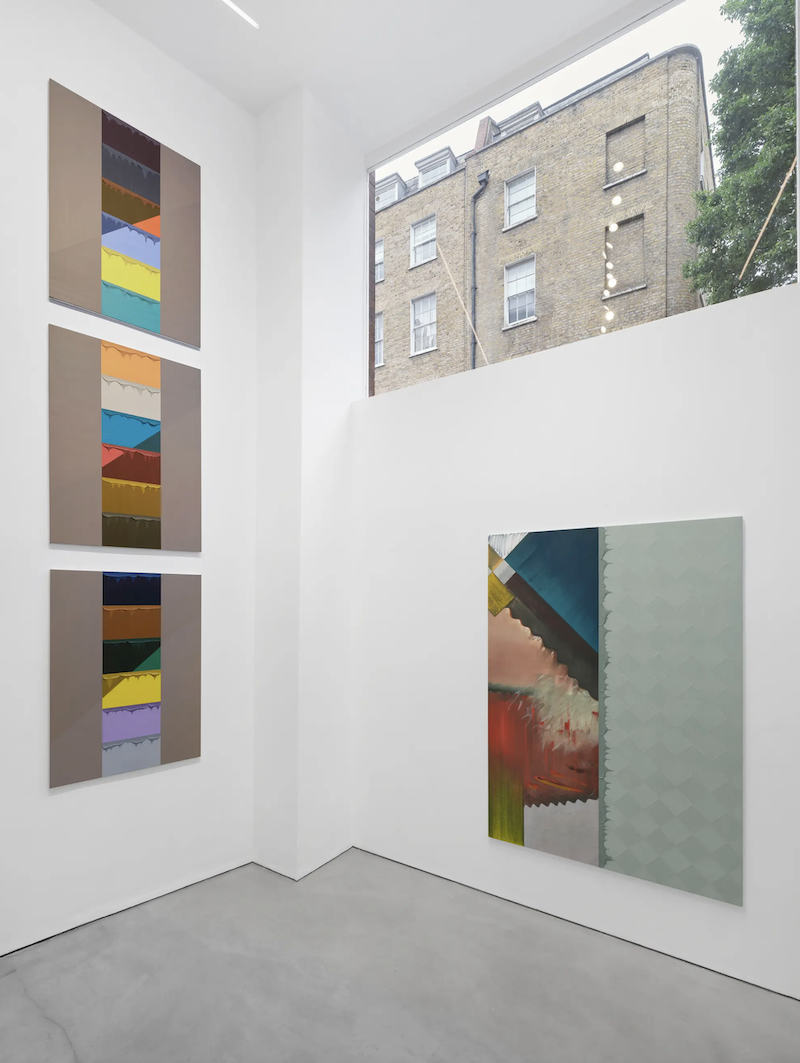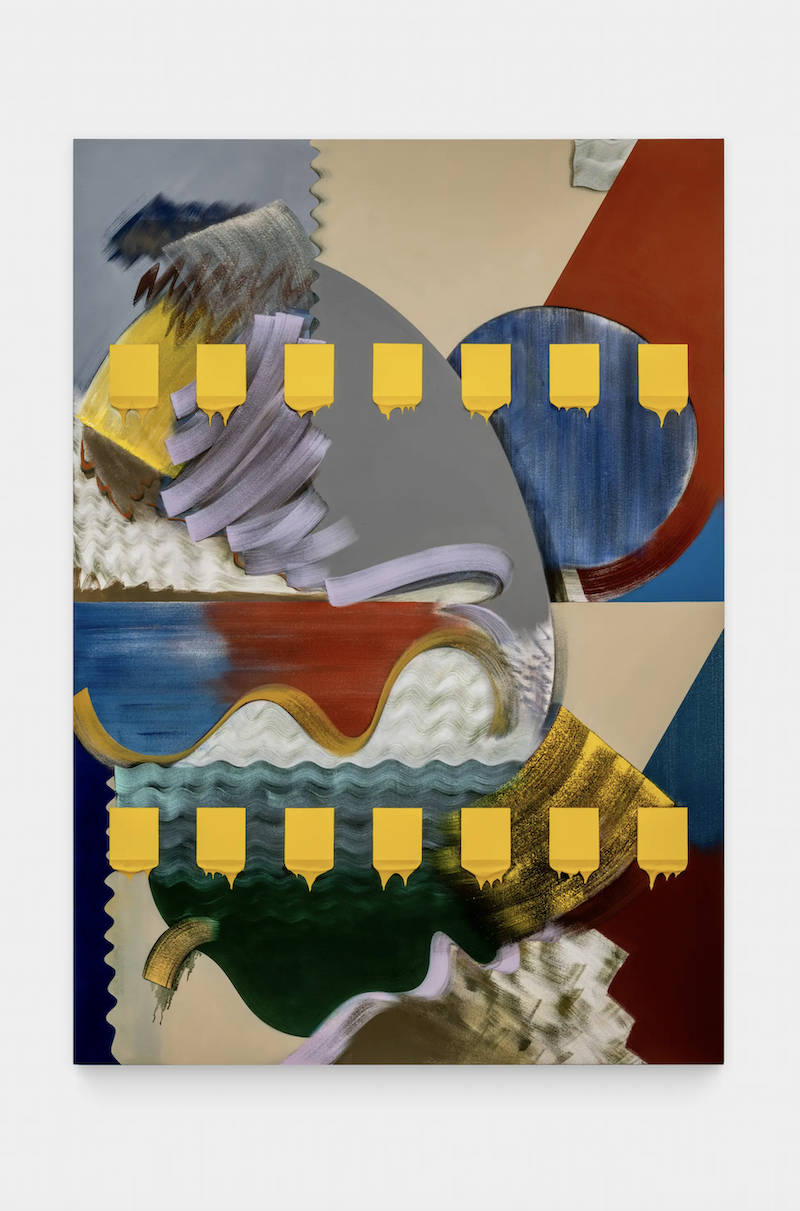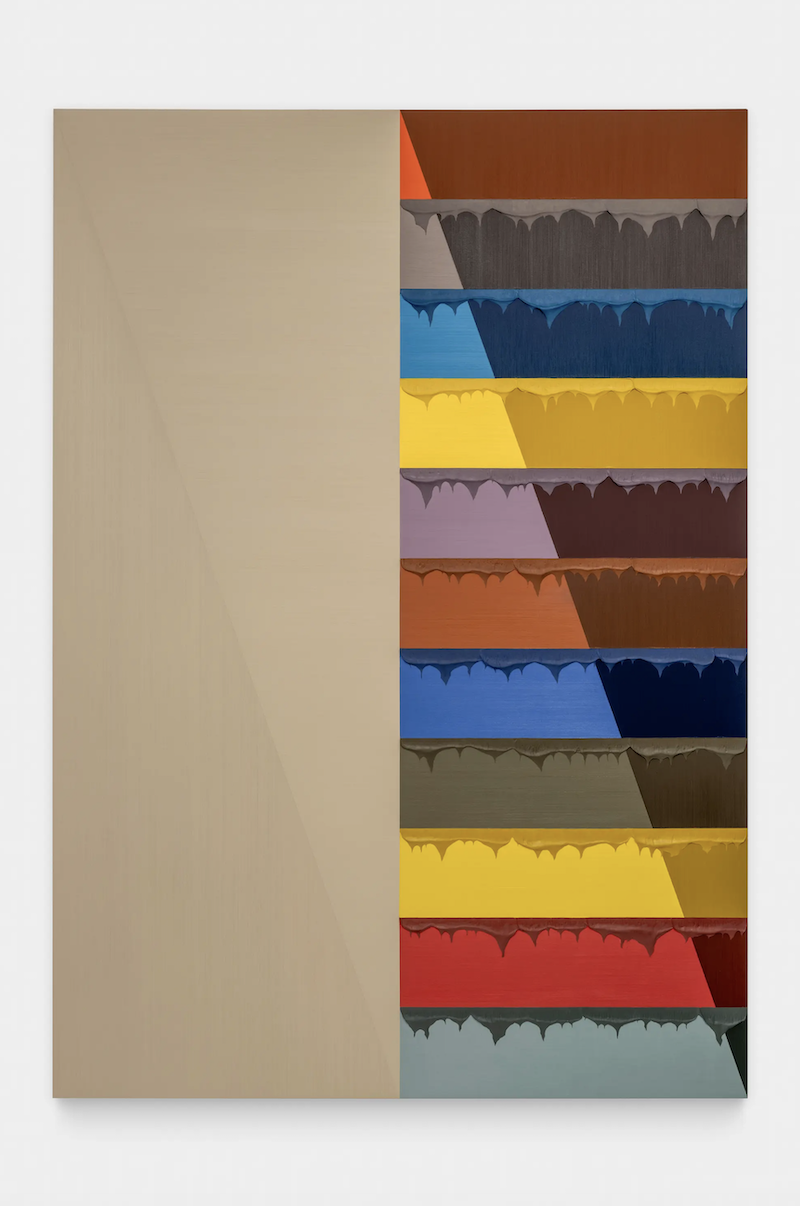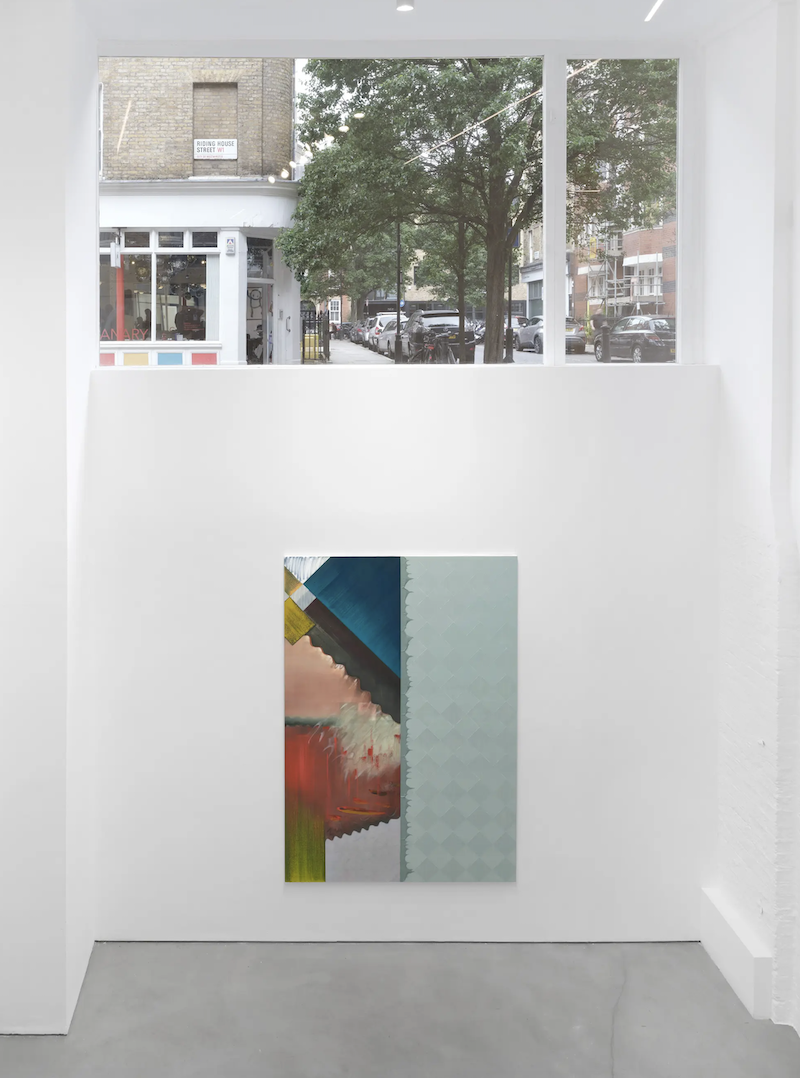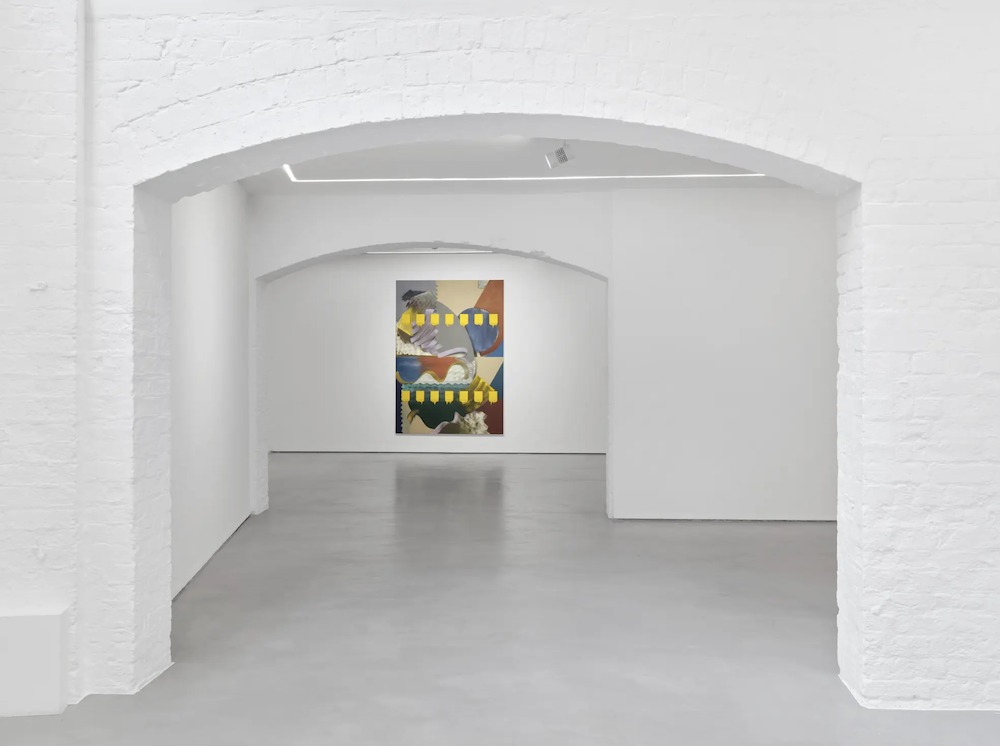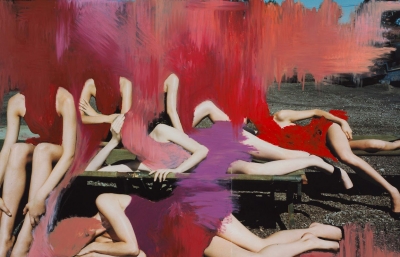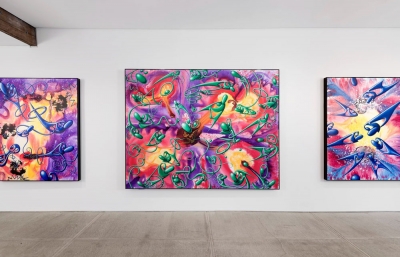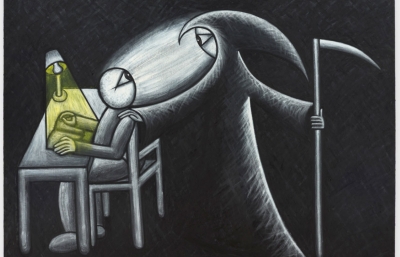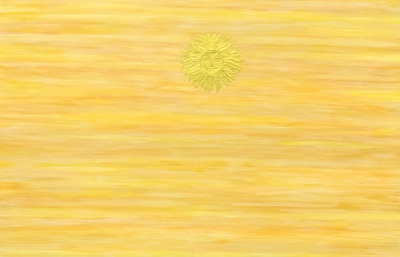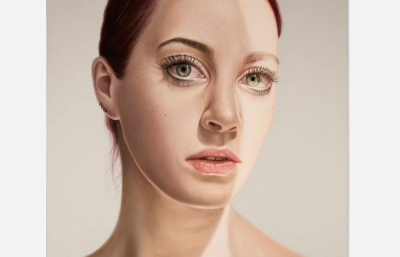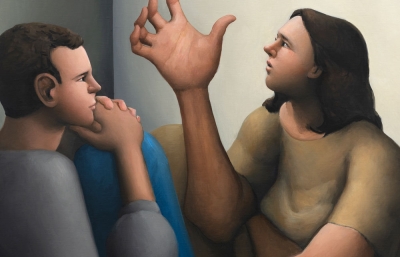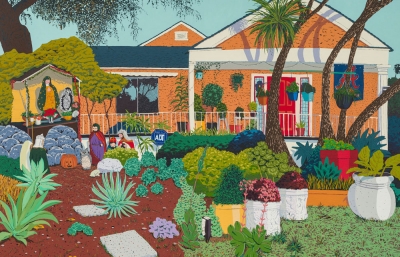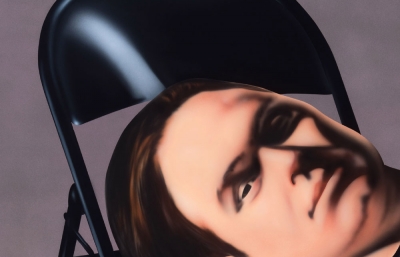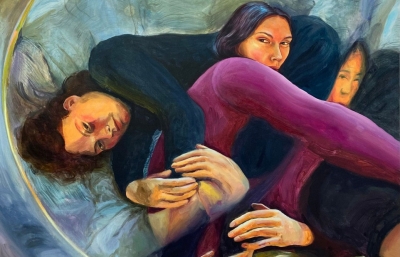Josh Lilley is pleased to present, Spines, Alex Olson’s (b. 1978, Boston, MA) first solo exhibition with the gallery. Over the past decade, Alex Olson has made perceptually complex paintings that ask how we understand what we see. She early on thematized acts of reading and interpretation through asemic stand-ins for written texts, and then increasingly used the trope of the stroke or calligraphic line to communicate how paint is simultaneously material and a means of signification. She likewise has described the use of visual speed bumps to slow down apprehension of the whole composition, or to dislodge one from the ease of having a quick glance conform to unconscious habit. In her plays of pattern recognition but also disambiguation, she creates frames for these epistemic processes. Her new works presented in Spines—inclusive of the largest made to date—show Olson moving from wondering aloud, visually, about preconceptions to the limits of knowledge and how it is acquired in the first place.
Spines here reference books, but also bodies, and specifically those of Olson and her newborn daughter. The spine serves as a structuring device throughout. It originated with an ultrasound imaging her daughter, and serves as a metonym for the presence of another, but also keys to what Olson characterizes as products of learning, or “bookish” knowledge. Two Spines Side by Side (all works 2024) centers two vertical columns—edges and vertebrae, and also monochromes—each a chain of red squares running the length of the canvas, seeping from within. (Olson names these indications of mutability “glops,” and they recur as horizontal tracks in Two Spines Lying Down.) Books as such appear elsewhere, as in Page (Haptic Text with Bite) and Dog-Eared Page (Taste), which considers how they are used: as media for content dissemination or, in instances of misuse that deliver alternate sensory information, how they feel, sound, or even taste. In Primary Book and related pieces, stripes function like text, running down a page.
These multilayered paintings, built in near sculptural relief with modeling paste, likewise bifurcate the field and radicalize effects of ambient lighting in conjuring faux light and shadow in excess of what respectively falls and produces it. As in Library, these elements produce and disrupt pictorial illusion, hinting at so many other compositional possibilities under any given one. And it is this openness to not-knowing that connects these paintings to others that differently develop forms that represent the world of Olson’s child as a way to imagine coming into understanding, as well as preexisting systems of language and mediation. Balcony and Bath are divided into sections comprising a grisaille checkerboard and a riot of color above or beside its threshold, suggesting what remains proximate but likewise beyond reach.
As with her earlier work, then, if on new terms, Olson’s paintings ask of our collective but also individuated and indeed developing experiences of embodied life-worlds, and how we might communicate something of but also beyond them. —Suzanne Hudson



